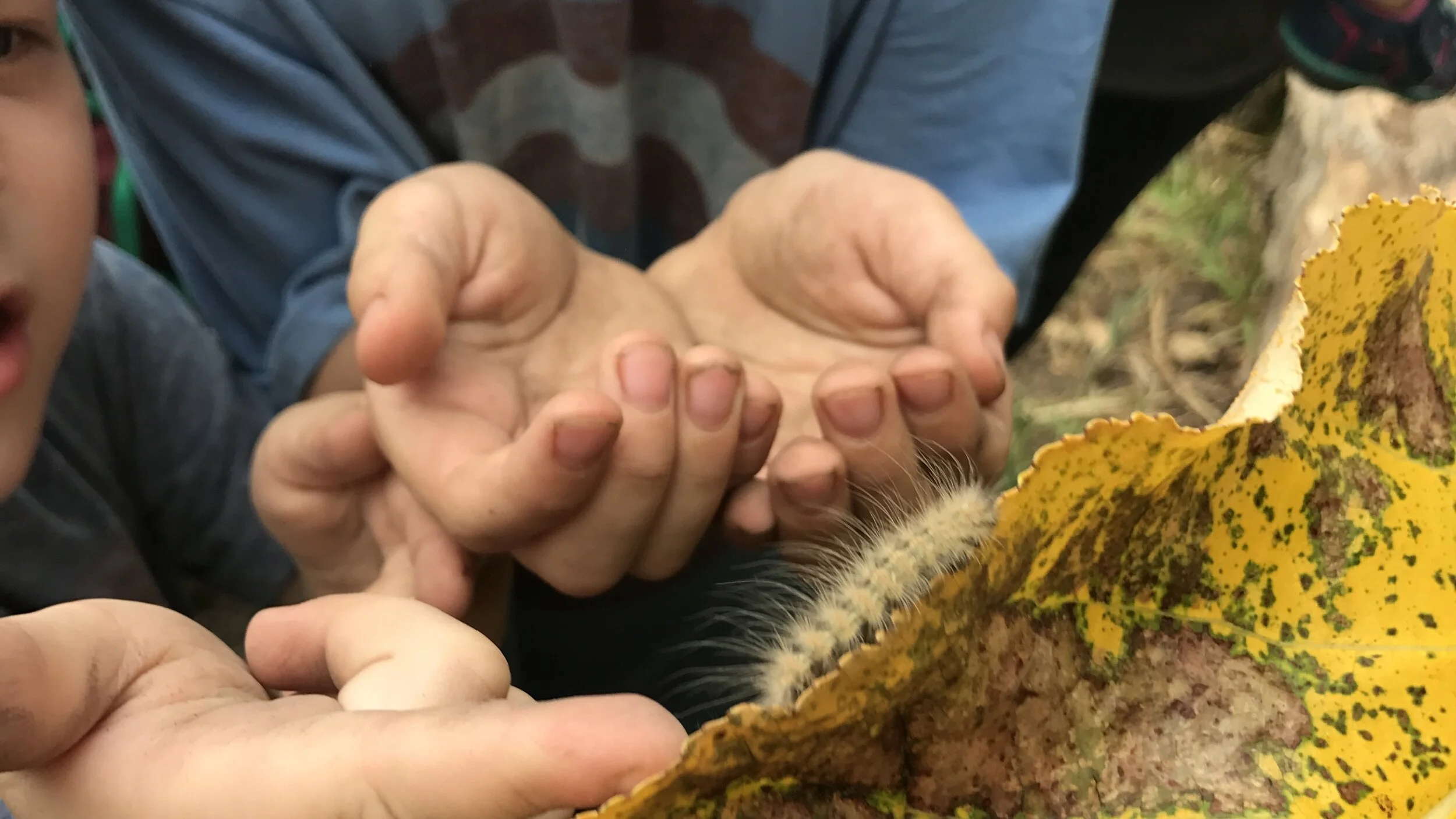Rachel Carson and the Sense of Wonder
Written by: Bryna Campbell
It used to be that whenever we went hiking as a family, we were all about the destination.
Did having a kid stop us? No way! We'd strap him into a backpack carrier and head on our way no matter how long the trail.
We were those people who'd brag about how far our kid hiked with us. Four miles, six miles… "oh, he’s good," we’d say!
Then...well, then he grew too big for us to carry him.
There was whining. There were fits. Sometimes he’d seem tired one moment and be running the next. Or he would do something that seemed designed to unnerve us.
One time, he just took off running in the direction of the trailhead as fast as he could. Another time he sat down on the trail and wouldn’t budge.
When we started Super Nature Adventures, we sent out a survey to families about hiking that revealed that our challenges were pretty much the norm. Lots of you shared stories about your kid rebelling while on the trail. As many of you noted, even if you are committed to getting outdoors, when kids revolt, going hiking with them can feel like a really big slog.
So...What to do about it?
One resource that has helped us is Rachel Carson’s book, The Sense of Wonder. Carson is known as one of the founders of the modern environmentalist movement. As such, she has spent much of her career devoted to forging closer connections between people and the outdoors. The Sense of Wonder is great because in that book she focuses on the importance of nature for kids.
Here are a few of our favorite tips from The Sense of Wonder:
"A child's world is free and new and beautiful, full of wonder and excitement." Kids see nature differently than adults. Often, our own sense of wonder has faded or even disappeared over the years. Carson argues that the one of the simplest things we can do to support kids is to rediscover our own sense of awe and share in their joy when they are excited about what they find out in nature.
"Many children, perhaps because they themselves are small and closer to the ground than we, notice and delight in the small and inconspicuous.” While adults tend to be destination oriented, kids tend often get excited about the beauties in the world that we miss because, as Carson writes, “we look to hastily.”
"It is more important to pave the way for the child to want to know than to put him on a diet of facts he is not ready to assimilate.” Carson argues that kids must have a desire to learn first, and that our goals as parents should be to build that desire. Or to put in another way, early childhood is the time to “prepare the soil” for the “seeds that later produce knowledge and wisdom.”
"Exploring nature with your child is largely a matter of becoming receptive to what lies all around you. It is learning again to use your eyes, ears, nostrils and fingertips, opening up the disused channels of sensory impression." We don’t need to be experts on nature to help our kids forge a closer connection to the outdoors. We do need to use our senses.
Through these actions we can learn as much from our kids about the outdoors as they can learn from us. Children can help us strengthen our own sense of awe. For Carson, this is deeply significant. "Those who dwell, as scientists or laymen, among the beauties and mysteries of the earth are never alone or weary of life,” she writes. Through our sense of awe we find ourselves more connected to something beyond ourselves.
These ideas have been foundational to the kid-centered packets we’ve been making over the years for those who sign up for monthly packet subscriptions. After all, to build those deep, meaningful, joy filled connections to the outdoors, we need start with understanding what nature is like for kids.

